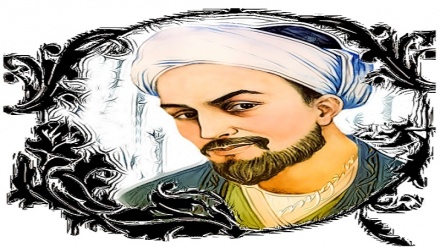Iranian notables, sources of global honor (188)
Welcome to this week's episode of the series Iranian Notables, Sources of Global Honor. Today, we continue to discuss the life and accomplishments of the great Iranian mystic of the 3rd Century AH, Hussein ibn Mansour Hallaaj.
Despite of all efforts which have been carried out by oriental scholars and other researchers in order to discover the life and activities of this great mystic, his life remains shrouded in obscurity. Meanwhile, among the researchers, who have made efforts to gain an understanding of the life of Hallaaj; the French Orientalist, Louis Massignon leads others. This oriental scholar has authored and compiled a number of books on this topic.
This mystic's name was Hussein, while his father was named Mansour. In ancient texts, no reference has been made to his date of birth. The Islamic encyclopedia has pointed out his date of birth as 858 AD. Three French oriental scholars, namely Louis Massignon, Henry Corbin, and Roger Arnaldez, have also stated the same year of birth for this great Iranian mystic. However, these French orientalists have not provided any evidence in their compilations in order to prove their claim. It seems as though they have guessed this mystic's date of birth based on the developments of his life.
Hallaaj was born in Toor Village in Fars Province. He accompanied his family in their migration to Iraq, throughout his childhood. Hussein ibn Mansour earned the title of Hallaaj, which means cotton-beater. After a while, his real name was overshadowed by his title, and he became popularly known as Hossein ibn Mansour Hallaaj.
This famed Iranian mystic left the city of Vaaset at a young age and headed toward the city of Ahwaz in southern Iran, in order to attend the classes of the renowned Iranian mystic, Sahl ibn Abdullah Tostari. Hallaaj learned the principles of mysticism from his lecturer, while leaving the city of Ahwaz in the year 262 AH, to benefit from the vast knowledge of the prominent lecturer, Amr ibn Osman. He settled down in the city of Basra for 1.5 years, excelling significantly in mysticism. Amr ibn Osman Makki realized that Hossein ibn Mansour was going to glitter in the spiritual realm. Throughout this phase in time, Hallaaj married the daughter of Abu Yaqoub Aqta, despite the opposition of Amr ibn Osman to this marriage, leading to a dispute between this lecturer and student. It is said that Abu Yaqoub Aqta and Amr ibn Osman Makki rivaled over the leadership of Sufis in Basra, and each one of them wanted Hallaaj on their side. Meanwhile, Hallaaj, who had sought refuge at Basra Mosque, worshipping God and reciting ayahs of Holy Quran, was saddened by the dispute between the said two figures, leaving Basra and settling in Baghdad, joining the supporters of the well-known Iranian mystic, Junaid.
Hallaaj observed Hajj rituals three times, throughout his life. Wherever he went, his followers and supporters gathered round him. People mostly honored him, which frightened and provoked the suspicion of the rulers of Baghdad. Ultimately, the then rulers of Baghdad managed to imprison him, as the result of baseless accusations that they had leveled against Hallaaj, and to issue his death sentence in the aftermath of his eight-year incarceration. He was hanged in the year 309 AH.
The posthumous image of Hallaaj, either presents his innocence, or places him in the midst of accusations and denials. Seemingly, his fate has shrouded his life in obscurity. Judgement about him, whatever that might be, reveals and manifests the importance and significance of Hallaaj and his thoughts. Some denied and abandoned him, and ordered his murder; while some others approved of him, were kind to him, followed him, and were influenced by him; which all and all displays his effective and influential role. This is because if he was not influential, there would have been no need for all these enmities, denials, and accusations; and if he was not an influencer, he would not have had so many followers, devotees, historical reflections, and lasting remarks. Hence, he is considered as a distinguished and effective figure within the framework of the historical path of Iranian mysticism.
Hallaaj achieved fame mostly because of his thoughts, lifestyle, and terms of death, rather than his works and compilations. As it was previously pointed out, Hallaaj authored many books. However, only a few of them have remained to this day. Meanwhile, a large number of his remarks, and his behavioral patterns have been cited in other books; based on which one can discover and realize his views and thoughts.
If we intend to point out his pivotal and important view; it should be stated that further proximity to God formed the main aspect of the thoughts and works of this renowned Iranian mystic.
MR/ME


